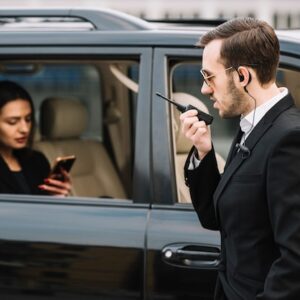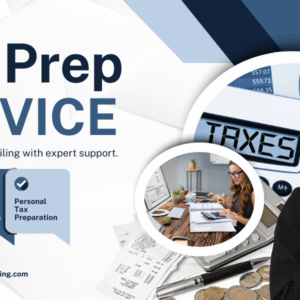In the competitive landscape of modern events, thought-leadership has become a defining quality that separates memorable gatherings from forgettable ones. Whether it’s a conference, seminar, or trade show, attendees are not just looking for products or connections—they’re seeking insight, innovation, and authority. One powerful but often underestimated tool in reinforcing that thought-leadership is your event brochure. Far from being a simple information handout, a strategically crafted brochure can communicate expertise, credibility, and brand vision long after the event ends.
A well-designed event brochure acts as both a learning guide and a visual narrative of your event’s intellectual value. It reflects the organizer’s ability to curate meaningful content, present it with clarity, and connect it to a broader mission. Here’s how you can use your brochure to establish and reinforce thought-leadership throughout every stage of your event experience.
1. Start with a Vision-Centric Narrative
Before diving into design or layout, think of your brochure as a storytelling medium. Instead of jumping straight into logistical details like dates and schedules, open with a compelling narrative that highlights the vision and purpose behind your event. What problem does your event address? What trends or industry shifts are you leading conversations about?
By articulating your event’s “why,” you frame the entire experience within a context of thought-leadership. Attendees immediately understand that they’re part of something purposeful, not just another gathering. This opening narrative sets the tone for authority and positions your brand as a voice of influence in the industry.
2. Feature Insightful Content Over Promotional Material
Too many event brochures fall into the trap of being overly promotional—filled with sponsor logos, generic slogans, and redundant marketing language. If your goal is to be seen as a thought-leader, the brochure should focus more on insight and substance.
Incorporate short articles, thought-provoking quotes from keynote speakers, or data-driven infographics that highlight trends in your sector. For instance, a technology conference brochure could include a brief feature on the future of AI ethics, or a sustainability event could present a snapshot of emerging environmental innovations. This approach turns your brochure into an educational resource rather than a simple advertisement.
When you provide valuable insights within your brochure, you demonstrate expertise—and attendees will naturally associate your event (and brand) with authority and intelligence.
3. Use Design to Reflect Credibility and Professionalism
Thought-leadership isn’t just communicated through words; it’s reinforced visually through design. A brochure that looks dated, cluttered, or inconsistent can undermine your credibility instantly. The color scheme, typography, and structure should all align with your brand’s professional tone and intellectual positioning.
Minimalistic layouts often work best for events emphasizing expertise. They allow breathing space for important content and ensure that the design doesn’t overshadow the ideas. Choose a color palette that reflects confidence—subtle blues, greys, and whites often convey trust and sophistication.
If you want to achieve a polished finish that aligns with your event’s leadership image, consider seeking professional assistance from Brochure Design Services in Dubai. Experienced designers can ensure your visuals, tone, and hierarchy all reinforce your brand’s authority and help translate complex ideas into a clear, compelling design.
4. Highlight Speaker Expertise and Backgrounds
One of the strongest assets in your event’s thought-leadership arsenal is your lineup of speakers, panelists, or moderators. Your brochure should go beyond listing their names—it should introduce them as voices of authority.
Include concise bios that highlight their professional achievements, published works, or notable innovations. You can also add pull quotes or short testimonials from past engagements. By framing each speaker as a recognized expert, you’re associating your event with high-caliber intellect and experience.
To further enhance impact, organize speakers under thematic categories or topics. This not only improves readability but also shows that your event’s agenda is thoughtfully structured around coherent intellectual themes rather than random sessions.
5. Incorporate Thoughtful Visual Storytelling
Images and graphics can communicate leadership just as effectively as text. Instead of using generic stock photos, opt for visuals that capture authentic moments of expertise—such as previous speakers presenting, interactive discussions, or innovation showcases.
Infographics, charts, and conceptual illustrations can also elevate your brochure by turning complex information into digestible insights. For example, including a “State of the Industry” chart or a “Future Trends Roadmap” graphic immediately signals that your event offers foresight and valuable knowledge.
Visual storytelling is particularly impactful in digital brochures, where interactivity can further enhance engagement. Embedded links, QR codes, or animated graphics can direct readers to deeper insights, whitepapers, or recorded speaker sessions.
6. Frame Sponsors and Partners as Intellectual Collaborators
Sponsorship sections in brochures often appear purely commercial, but for a thought-leadership-driven event, they can serve a higher purpose. Present your sponsors and partners as collaborators contributing to intellectual or technological advancement. Highlight joint initiatives, co-authored research, or innovative solutions they support.
This approach reframes sponsorship as a partnership of ideas, reinforcing your event’s leadership positioning while offering value to sponsors. It also helps attendees see the broader ecosystem of knowledge surrounding your event.
7. Include Post-Event Knowledge Pathways
Thought-leadership doesn’t end when the event does—it continues through sustained engagement. Your brochure can act as a gateway to ongoing learning and dialogue. Include links or QR codes leading to online resources, such as post-event reports, webinars, or discussion forums.
A “Continue the Conversation” section at the end of your brochure encourages attendees to stay connected, subscribe to updates, or engage with future events. This establishes your organization as a continual source of insights, not just a one-time event host.
Digital brochures, in particular, excel in extending this continuity. With the right design and content strategy, they can guide users seamlessly toward your brand’s educational ecosystem, reinforcing long-term thought-leadership.
8. Ensure Consistency Across All Touchpoints
Your brochure should be an extension of your broader brand narrative. Ensure consistency in tone, design, and messaging across all marketing touchpoints—from social media and email campaigns to on-site visuals.
When attendees notice a unified voice and visual identity across platforms, they subconsciously associate your event with professionalism and strategic coherence—two qualities that embody thought-leadership.
Consistency also applies to how data, terminology, and visuals are presented. Avoid contradictions between your brochure and your website or presentation materials. Every detail should reinforce your role as a trusted authority.
9. Create a Legacy Piece for Future Reference
An expertly designed brochure doesn’t lose its value after the event—it becomes part of your brand’s knowledge archive. Many event organizers distribute their brochures digitally afterward as downloadable PDFs or highlights in follow-up newsletters.
By treating your brochure as a legacy document, you position it as a long-term resource. It continues to communicate your expertise and leadership even as new events come and go.
For instance, you can repurpose its content into blog posts, educational materials, or social media snippets, ensuring your ideas reach a broader audience beyond the event attendees.
10. Measure Impact and Refine for Future Events
Finally, like any communication tool, your brochure should evolve. Gather feedback from attendees about what sections they found most engaging or useful. Track engagement metrics in digital versions—such as link clicks or downloads—to identify which content themes resonate most with your audience.
Use this data to refine your future event brochures. Over time, you’ll develop a more nuanced understanding of how to position your event’s authority and how design choices affect perception.
In today’s event marketing ecosystem, every detail contributes to your reputation as a thought-leader—and the brochure is a cornerstone of that perception. When crafted thoughtfully, it becomes more than just a printed schedule or promotional flyer. It becomes a visual manifesto of expertise, foresight, and purpose.
With careful planning and the right creative direction, including professional Brochure Design Services in Dubai, you can ensure that your brochure not only informs but also inspires—cementing your event’s place as a hub of innovation and authority in your industry.

